by Ulrike Čokl
Photos @Benjamin Hörbe & Ulrike Čokl
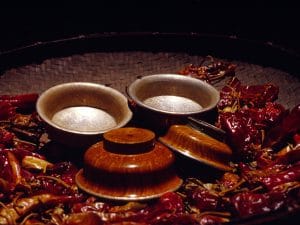 “Please come for my annual ritual!” I often hear this invitation from Bhutanese friends, and immediately images come to mind of us sharing delicious food and drink while sitting on beautiful wooden floors in a Bhutanese kitchen. I always carry my little cup, phob, with me, ever ready to pull it out, unwrap it from the tora, a piece of cloth, and receive the local welcome drink. Senior villagers, observing my every move, will be surprised and then appreciate my knowledge of local etiquette. I smile, feeling a bit proud to have been able to master at least something of the complex Bhutanese etiquette. Meanwhile the scene is underlined by the sound of prayer recitations and religious instruments in the nearby choesham, altar room.
“Please come for my annual ritual!” I often hear this invitation from Bhutanese friends, and immediately images come to mind of us sharing delicious food and drink while sitting on beautiful wooden floors in a Bhutanese kitchen. I always carry my little cup, phob, with me, ever ready to pull it out, unwrap it from the tora, a piece of cloth, and receive the local welcome drink. Senior villagers, observing my every move, will be surprised and then appreciate my knowledge of local etiquette. I smile, feeling a bit proud to have been able to master at least something of the complex Bhutanese etiquette. Meanwhile the scene is underlined by the sound of prayer recitations and religious instruments in the nearby choesham, altar room.
Welcoming a friend with ara
I have always been interested in Bhutanese hospitality, and its role in fostering relationships, so much so that I have made it the focus of my research. During my stays in the villages, but also in Thimphu, I have been invited to numerous annual rituals by friends and families, and have become a true admirer of the complexity, beauty and joys of Bhutanese hospitality, and how it operates. Lochoed embodies many socio-cultural aspects: gift exchange and reciprocity, hosting practices and etiquette, commensality and sociality, traditional food and drink, and community cohesion and cooperation. In this article I would like to share some of my observations on the role of hospitality during lochoed.
Sacred landscapes
Lochoed is a yearly household ritual in which family members renew their good relations, thuenlam, with the local birth deities, kyelha, and with the community at large. The purpose is to ensure the well-being, health and fortune for the entire family, including livestock. Based on the idea that the natural environment is inhabited by numerous beings, some well-meaning and some vicious, the place of birth links a person to specific regional deities. Local deities and spirits are associated with places such as mountain peaks, lakes, cliffs and river confluences. The relationship with these local deities has to be kept in balance in order to avoid negative consequences such as sickness and misfortune. In countless lochoed rituals, I have observed how thuenlam is renewed with fellow humans in the kitchen, thabtshang, and with local deities in the altar room, choesham.
Lochoed can vary by scale and duration, depending on the wealth and status of the family. A friend told me that, “lochoed is particularly meant to appease the deities. However, in a more elaborate ceremony, rich people invite many monks, and after completion of lochoed they will move on to reading the holy scriptures Kanjur, which are 108 volumes. This will take another one and a half days, and might involve up to 60 or 70 monks. They might also simply continue with their lochoed for 3 days, inviting people from different neighbourhoods.”
Practicing Generosity
I have roughly identified three phases of hospitality during lochoed, each consisting of several steps which can be found in both the mundane and religious context: The first phase comprises activities of preparation, invitation and reception; the second phase includes activities of hosting, offering and entertaining; and the final stage revolves around closure and bidding farewell to the divine and human guests.
Hospitality and its practices can be conceptualized as a ritual of social relations. Generosity and compassion are important basic principles of Bhutanese hospitality. In everyday life however, with all its constraints, people are more likely to oscillate between self-interest and mutuality depending on individual characters and personalities. I was told that lochoed offers the possibility of expressing jinpa, generosity. During lochoed, householders will provide the best they can within the limits of their resources. This creates happiness for all involved and generates merit for the hosts.
During lochoed the kitchen, thabtshang, and altar-room, choesham, become buzzing places filled with the mixed odours of burning juniper incense, butter lamps and a variety of food. The house reverberates with the captivating sounds of religious musical instruments and monks reciting prayers. In the kitchen, people are laughing and chatting while working tirelessly. The kitchen is the place where most families and guests gather. In winter it is also the warmest room because the fire in the mud stove will be kept going continuously. There is always a pot of hot water ready in case unexpected guests arrive and tea has to be prepared.
Preparations prior to lochoed
Lochoed previously and today
The lochoed season usually begins after harvest. The exact day will be fixed according to the Bhutanese calendar and after consultation with an astrologer. When the time nears the nangi aum, the lady of the house, will look for monks and request the village lama to perform the ritual. Usually lay monks, gomchen, will be called from the village. Gomchens are regular villagers with families and households of their own, who are initiated to perform necessary rituals under the guidance of the local lama. Ideally, I was told, there should be a minimum of eight monks to use the following religious instruments: conch shell, a pair of oboes and long trumpets, cymbals and the big round drums, beaten with curved drumsticks. In practice, however, pragmatism often sets the tone, and the number might vary. Previously, payment to the gomchen and lama was in kind but these days a certain amount of cash is expected. Food, and lodging, if necessary, will be provided by the host. Preparations for lochoed used to span over an entire year, including gathering the necessary food items on barter trips to adjacent valleys. Within the yearly cattle migrations to lower grazing grounds for example, the Bumthap would obtain rice and chili which they did not cultivate themselves. Nowadays such essentials can be bought in the shops and often will be sent by relatives who live in Thimphu. Close relatives of the same household who live far away and cannot contribute labour are expected to support the household financially.
Preparations and food items
On the morning of lochoed work may start as early as 4-4:30 am. Soon, people from the village will arrive with milk, butter and cheese as a contribution. The family will reciprocate such neighbourly help during their fellow villagers’ lochoed. Some chores will already have been completed the previous day, for example making butter lamps and torma, figures made mostly of flour and butter, used in tantric rituals or as offerings. Tshog, food that will be offered on the altar, is made of dough consisting of flour, sugar, oil and water, rolled into biscuits of elaborate shapes and then fried in plenty of oil.
Making torma
Food preparations include copious meat such as dried pork, sikam, homemade, juma, and ko, beef hide fried with spices, and chili. Vegetables are washed, cut and prepared with chili and cheese, datshi; a delicious soup, jaju, will be prepared from dried turnip stems, lom, mixed with milk and butter. Cheese will also be fried with butter and sometimes egg, and different types of alcohol and butter tea, suja are prepared. Singchang and changkhoe for example are two types of fermented alcohol made from wheat, rice and millet. Ara, the local moonshine, has been distilled over days and is in stock for the guests. Doma and pani (areka nut and betel leaves) are ready to be offered to the guests upon arrival. In the kitchen men and women are tirelessly cooking for the grand lunch reception.
Ritual hosting stages in the sacred and profane space
Meanwhile in the altar room, choesham, the first phase of the ritual begins with a lhabsang ceremony, the burning of incense and sprinkling of holy water to ritually purify the household. The deities are invoked one by one, according to a hierarchy of higher- to lower ranking ones. The lowest and malignant spirits are not “invited”. The ritual scriptures, recited by the lama, are specific to the household. Ngoentoed is the step where the deities are ritually informed of the reasons why they are being called. During chendren the deities are invited to join the lochoed and the household members will prostrate in the altar room. During the step of jinbeb, the lama invites the deities to be seated according to their status.
The second phase starts with choepa where beautiful offerings, such as incense, flowers and food, are presented to placate the deities. These offerings are on display on the altar. During toepa and kangwa the deities are praised with words and blessings to make them feel happy and welcome. One friend compared these stages to the flattering of high profile guests with pleasant words, offerings and body gestures in a mundane setting. One wants to make a good impression and keep them happy.
Finally during the tshog the now blessed food is offered to the deities and then distributed among the human guests. The monks will keep some pieces aside for lhagma, where the food offering leftovers will be “thrown away” for the deities of the lowest ranks, hungry ghosts and other lowly spirits.
In the last phase during torshag, gratitude is expressed to the deities and they are sent away. During ngoedup, the householders and guests will receive blessings, and finally auspicious prayers and merit will be shared with all sentient beings during trashi moenlam.
Whilst the relationship with the deities is being re-established in the choesham, the same procedure is enacted in the kitchen, with guests from the village and afar. At about midday people will start arriving at the door, and they will be invited in with welcoming words and gestures. Everybody knows where to sit according to local etiquette and status. First, doma and pani will be distributed as an initial gesture of friendship. Delicious changkoe, ara and suja, butter tea, will be poured into the cups the guests take out from their gho and kira, the male and female dress respectively. The host and helpers will start making rounds, literally with buckets of delicious food, using a ladle to pour the curry into the cups. For high ranking guests and the lama, the host will choose the fattest pork rind, sikam, to be put on top of the plate. The size of the sikam indicates the wealth of the host and status of the guest. The atmosphere during the feasting is enhanced by happy chatter, gossip and teasing. Whatever cannot be finished will be wrapped in a tora, a piece of cloth, and taken home by the guests to share with family. However, upon departure they will first be offered a farewell drink.
Once again I am sitting in my friend’s kitchen, with my own little phob being re-filled with fried changkoe at least three times. After a while I stop counting. The evening approaches and, as has happened so many times before, we may well end up singing and dancing, happily enjoying each other’s company after days of hard work. The bonds, thuenlam, between humans and deities have been renewed, merit has been produced and shared with all sentient beings, and a contribution to the well-being of the community and all creation has been made.


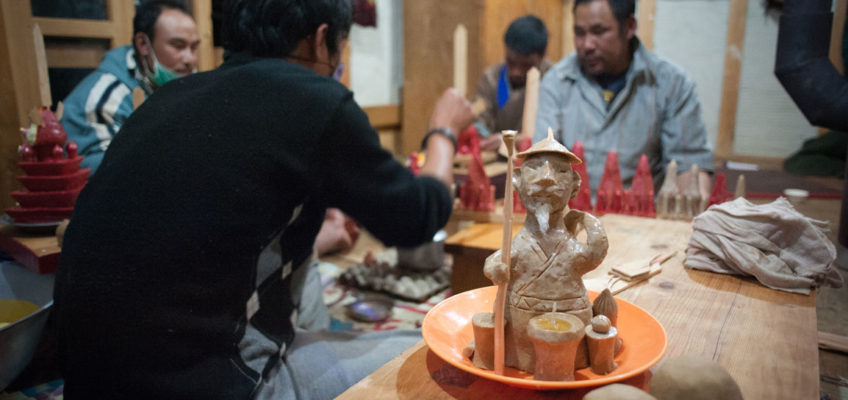
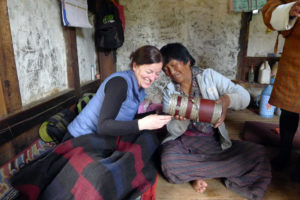
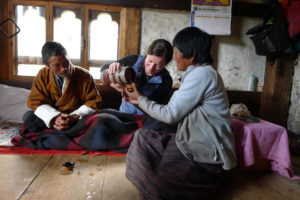
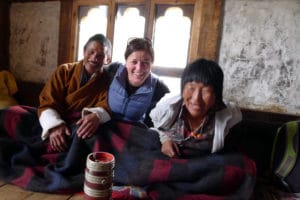
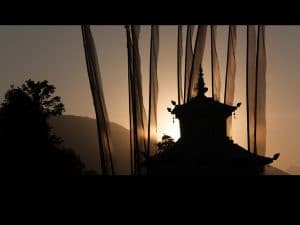
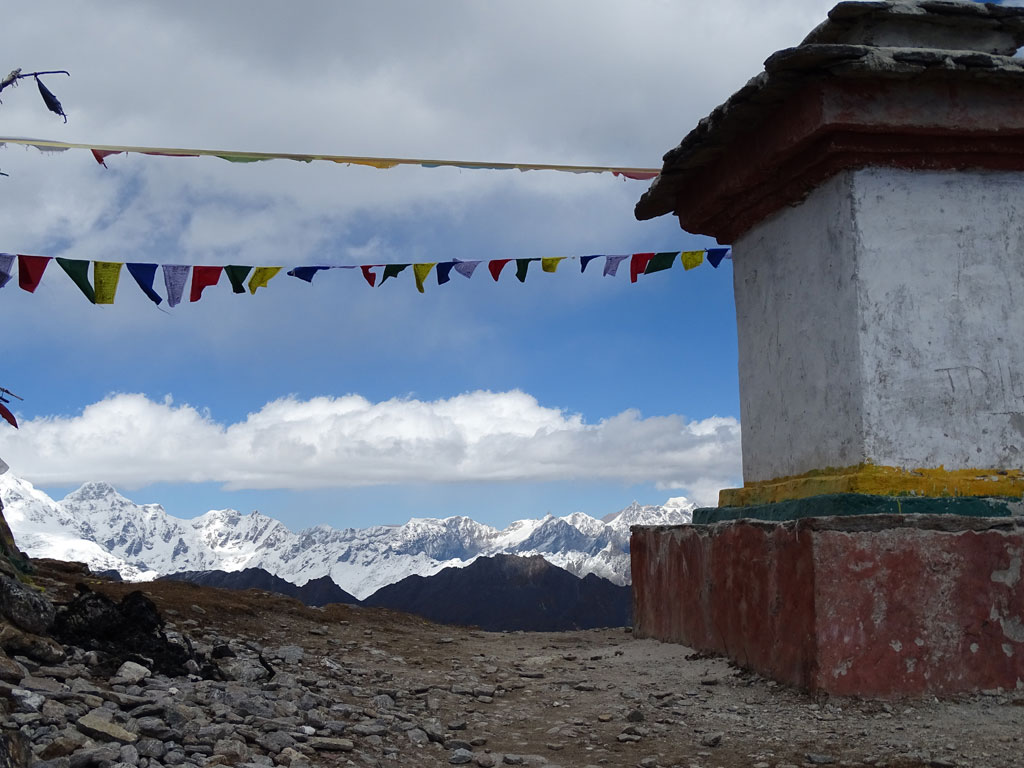

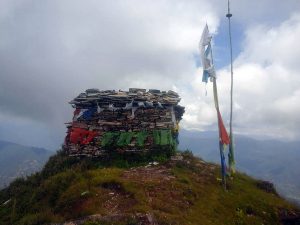
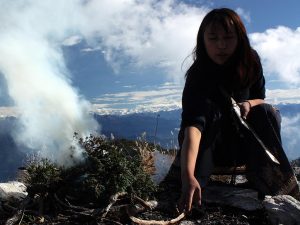
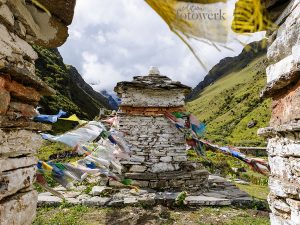
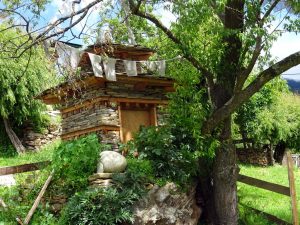
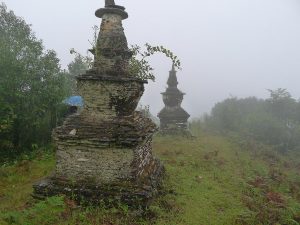
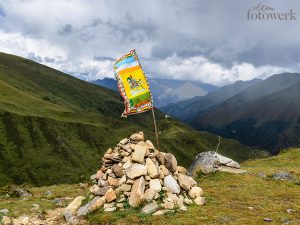
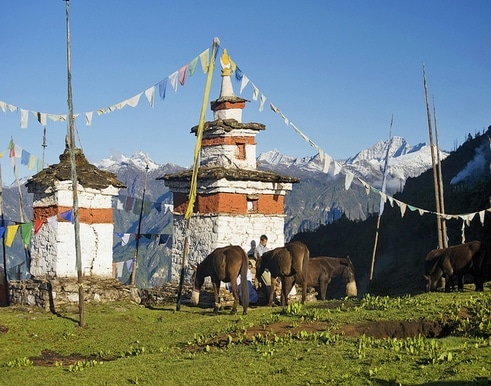
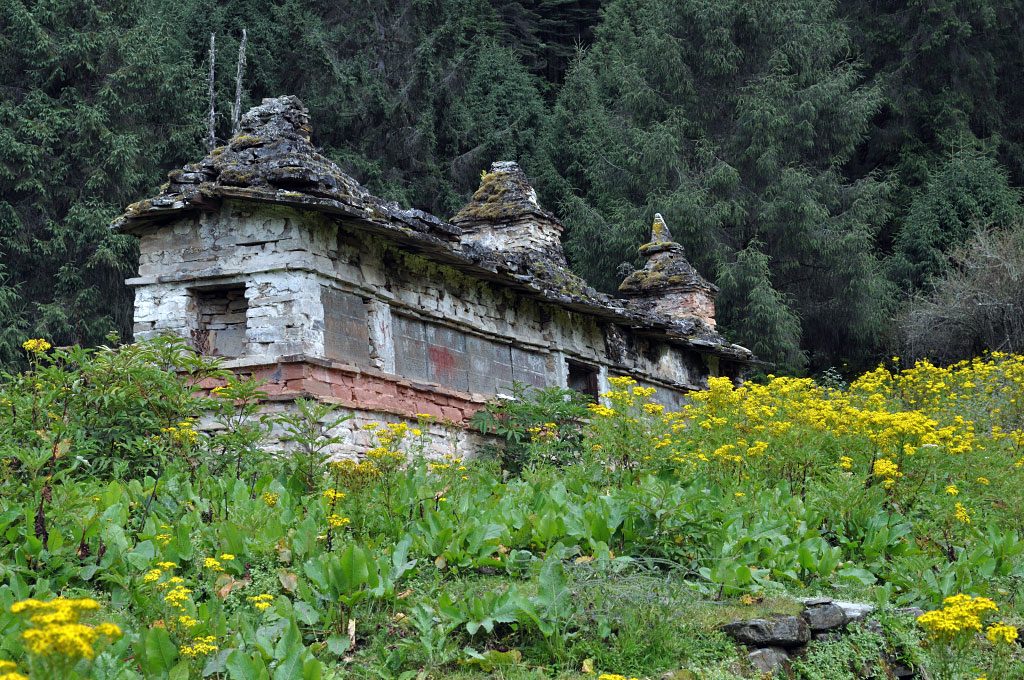
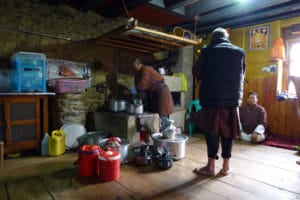
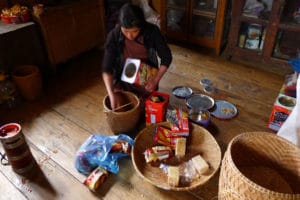
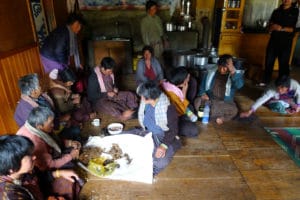
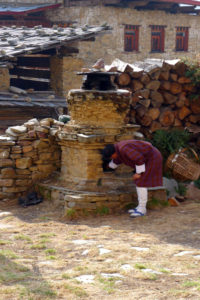
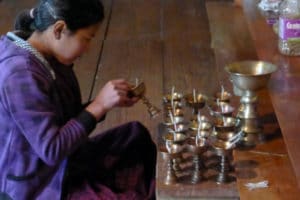
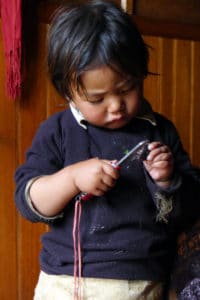
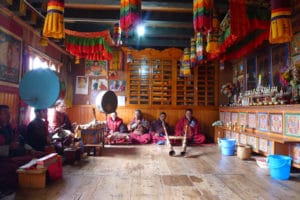
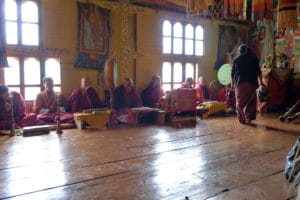
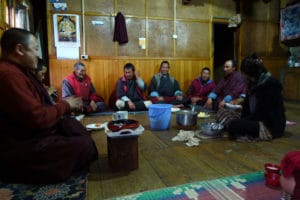
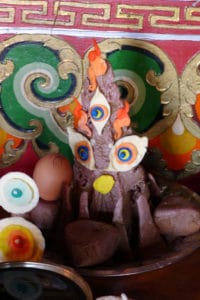
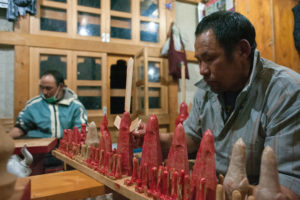
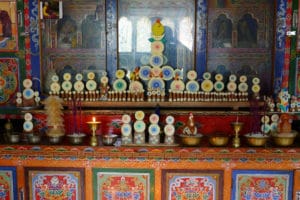
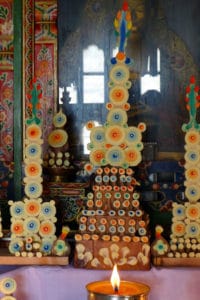
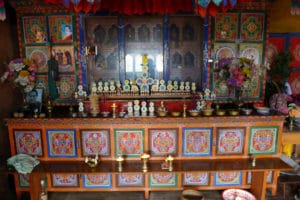
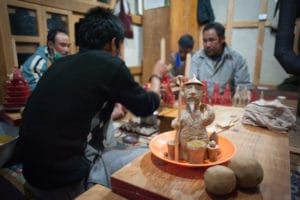
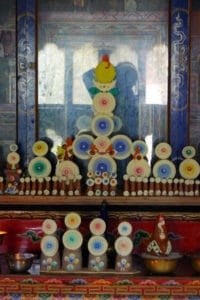
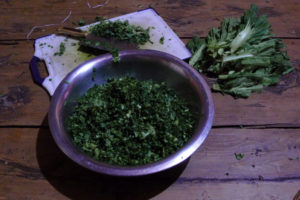
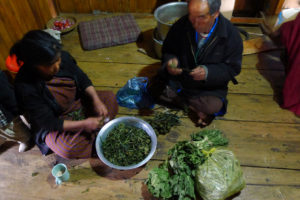
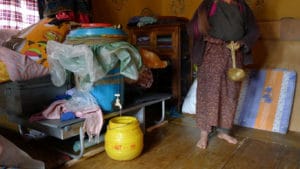
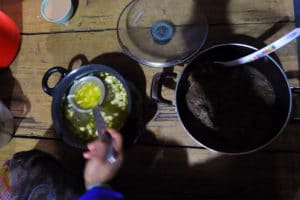
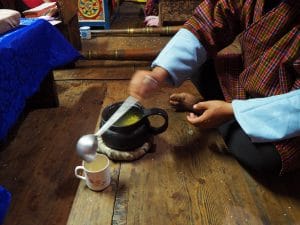
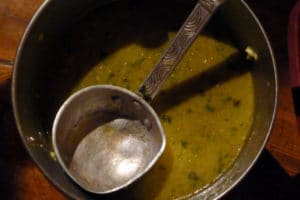
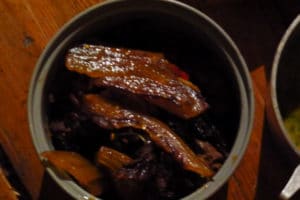
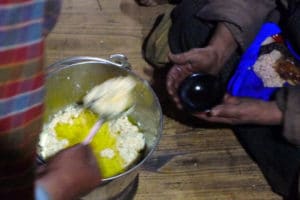
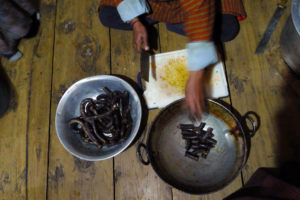
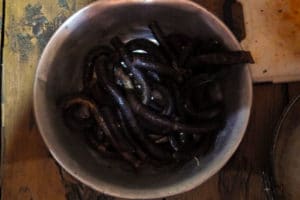
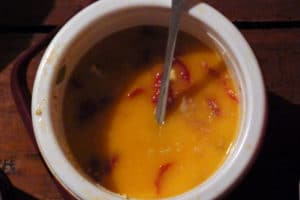
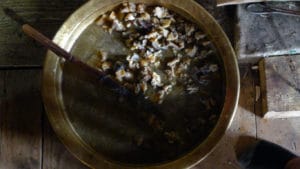
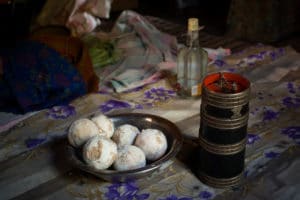
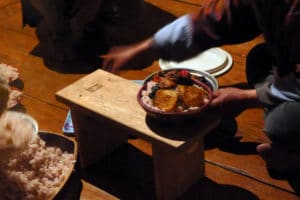
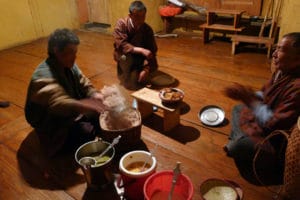
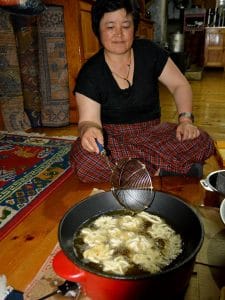
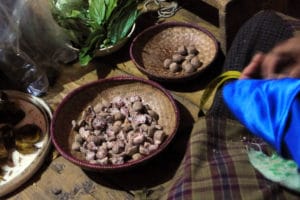
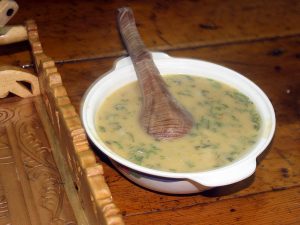
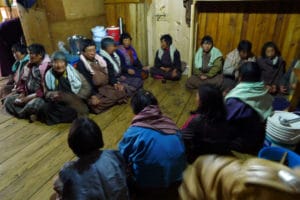
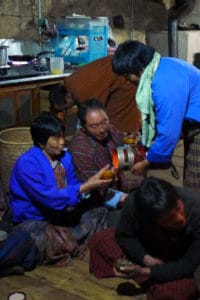
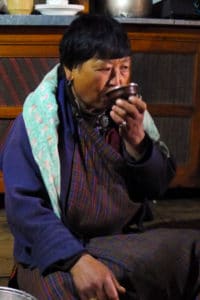
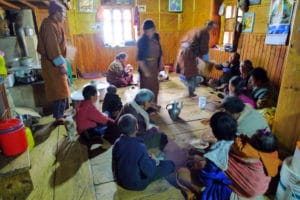
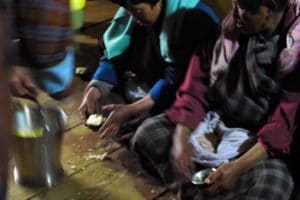
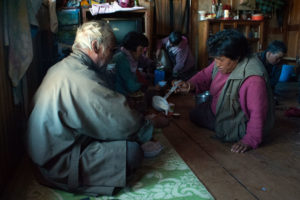
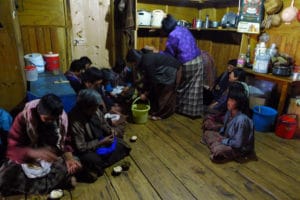
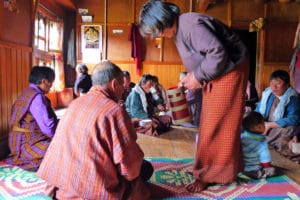
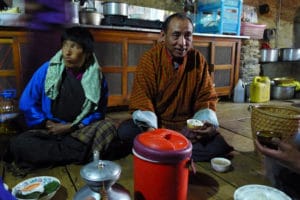
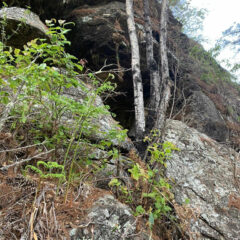
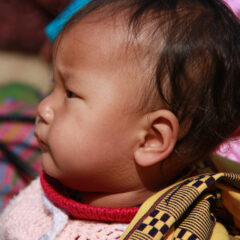
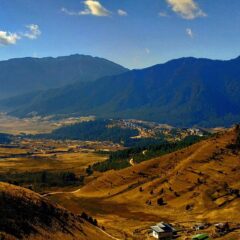
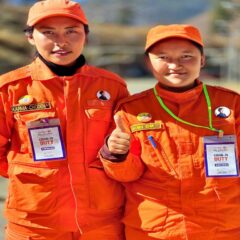

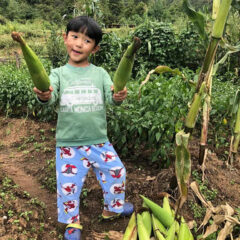
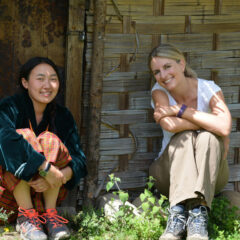
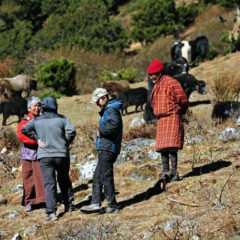
Haa Valley - Mike and Sandy Living New Experiences
[…] invited us to his family’s house to join them in their annual ritual, which is called Lochoed (check out the link to an excellent detailed description of the full ritual). Many families […]